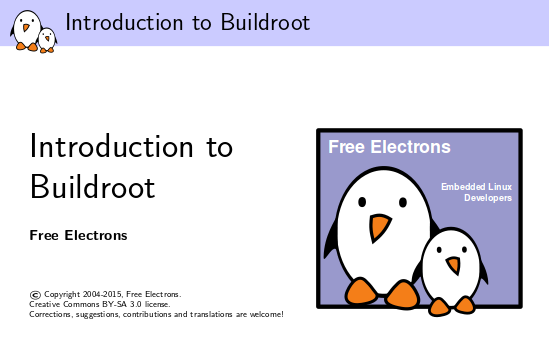Free Electrons develops embedded Linux & Android software, and also provides related training. On-site training sessions are scheduled from time to time, or organized on request, and they usually release their training materials for free, as they did for their Embedded Linux training in 2012, or their Yocto Project / OpenEmbedded course more recently.
Thomas Petazzoni, Free Electrons’ Chief Technical Officer, recently informed me that the company also released training materials for Buildroot, which like the Yocto Project is a build system, but it had been around for much longer, and the company is actively participating in its development with over 2,800 patches submitted upstream over the years.
Four main resources have been released for the course, under a Creative Commons BY-SA license:
- training materials for Buildroot – 325 pages
- Practical labs instructions (PDF) with BeagleBone Black – 32 pages
- Practical labs data (.tar.xz) – Patchsets for drivers, rootfs, and sample app
- LaTeX source code in their Git repository which should be the same as above, but you can make sure this is the latest version, but checking out and building the documentation yourself.
The on-site training itself lasts 3-days, with a public session scheduled on November 30 – December 2 in Toulouse, France (1,690 Euros per seat), but companies may also request on-site training sessions anywhere in the world starting at around 7,000 Euros for up to 16 people + travel expenses for a 3-day course.

Jean-Luc started CNX Software in 2010 as a part-time endeavor, before quitting his job as a software engineering manager, and starting to write daily news, and reviews full time later in 2011.
Support CNX Software! Donate via cryptocurrencies, become a Patron on Patreon, or purchase goods on Amazon or Aliexpress





